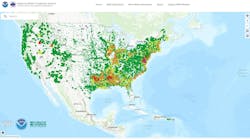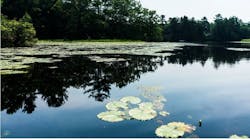Editor's note: This blog was first published on February 26, 2019.
Sometimes the choice between technologies isn’t clear. A new technique or an improved process saves us something in one area, but has a potential cost somewhere else. How to weigh the differences?
Scientists at the University of California, Davis, have come up with a new way to perform a basic task that goes back thousands of years: preparing olives. To make them edible, raw olives have traditionally been soaked first in a solution of brine and then in a solution of lye (sodium hydroxide) to remove bitter compounds called phenols. The soaking liquid must be changed a number of times; as this Economist article notes, “This is tedious, messy, and generates phenol-rich waste that is toxic to plants and animals.”
The UC Davis researchers are now replacing the lye solution with hollowed-out polystyrene beads. When added to a vat of soaking olives, the beads’ ion-exchange properties allow them to capture phenols from the brine solution. The beads achieve essentially the same result—olives that are not bitter—without the use of lye and without the extra time usually required to soak the olives in a separate lye solution. If the process can be scaled up for commercial use, it would mean faster processing time and cheaper olives.
The beads have high porosity and, because they’re hollow, a high surface-to-volume ratio, so they’re efficient at capturing the phenols. One type of bead tested has already been approved by the Food and Drug Administration as being safe for use in preparing food.
So what’s the trade-off? Polystyrene is a kind of plastic; one form is trademarked as Styrofoam—the packing and food-container material that so many environmental groups have been trying to ban—and polystyrene items are present in large amounts in waterways in the form of disposable plastic utensils, cups, yogurt containers, and so on. It does not easily biodegrade, but it does break down into smaller pieces that are easily eaten by birds, fish, and other water-dwelling creatures, making its way into the food chain. There is already widespread concern about microbeads—now banned in cosmetic products in the US and several other countries—and nurdles, the tiny plastic beads used to manufacture plastic bags and other products.
The UC Davis researchers say the phenols can be removed from the polystyrene beads they’re using with the olives, and the beads themselves can be recycled or reused, which would at least temporarily solve the problem of what to do with the beads. So here is my question for the chemists out there: What’s the process for removing phenols from polystyrene, and how much water does it take? Is the disposal of the wastewater from that process less hazardous—or less expensive, or both—than the disposal process for the traditional lye solution?






